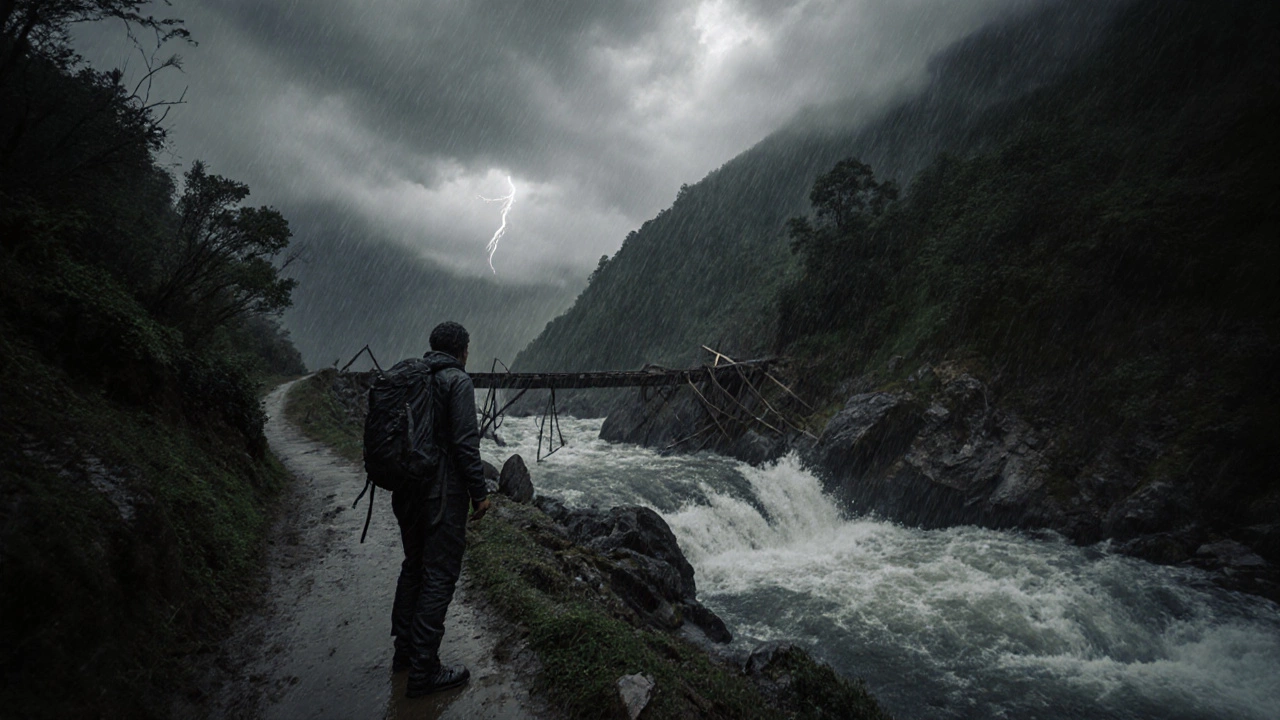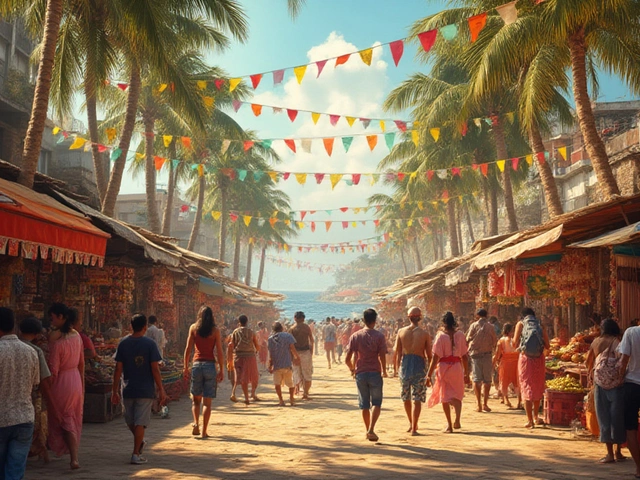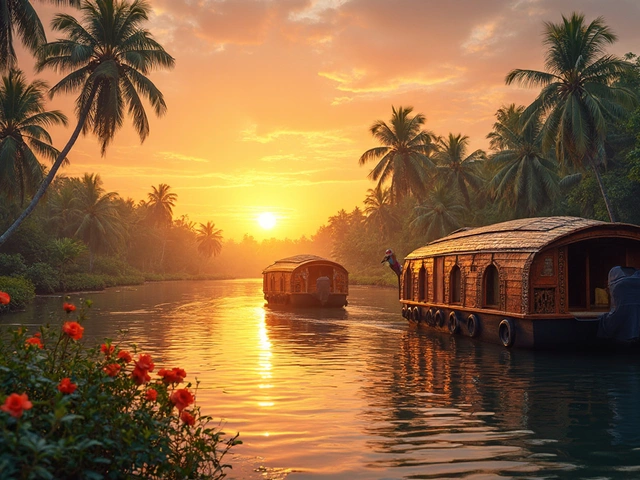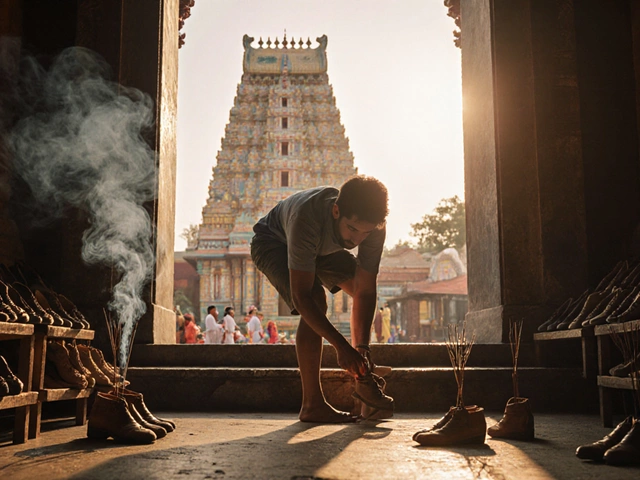Trek Safety Assessment Tool
Assess Your Trek Safety
Evaluate your preparedness for a trek in India based on critical safety factors.
Your Safety Assessment
If you’ve ever stood at the base of a mountain trail in India, breathing in crisp air and staring up at snow-capped peaks, you know why people come here for trekking. But that same beauty hides real dangers. Every year, inexperienced hikers get into trouble on trails that seem harmless at first glance. Some of these situations are obvious. Others? Not so much. Knowing what to avoid isn’t just about comfort-it’s about survival.
Monsoon season on high-altitude trails
Between June and September, India’s monsoon transforms mountain paths into slippery, muddy death traps. Landslides are common in the Himalayas-especially on routes like the Roopkund Trek, Kedarkantha, and the Valley of Flowers. Trails vanish under mudslides. Rivers swell into raging torrents. Bridges collapse. In 2023, over 40 rescue operations were launched in Uttarakhand alone because hikers ignored weather warnings. Even light rain can turn a gentle slope into a slide zone. If the forecast says rain, don’t go. No photo, no Instagram post, no ‘once-in-a-lifetime’ trip is worth dying for.
Altitude sickness without proper acclimatization
Many hikers think they’re fit enough to skip acclimatization. They show up in Leh or Manali and head straight for 15,000-foot passes. That’s a mistake. Altitude sickness doesn’t care how strong you are. Headaches, nausea, dizziness, and shortness of breath are early signs. Left untreated, it can lead to pulmonary or cerebral edema-both life-threatening. In 2024, a group of 12 trekkers on the Hampta Pass required emergency evacuation after ignoring symptoms for two days. The rule? Spend at least two full days above 8,000 feet before going higher. Drink three liters of water daily. Sleep lower than you climb. If you feel off, turn back. No trail is worth a hospital stay.
Going solo on remote trails
India’s most beautiful treks-like the Kuari Pass or the Nag Tibba Ridge-are also some of the least populated. Cell service is spotty or nonexistent. A twisted ankle on the Kedarkantha trail can leave you stranded for hours. In 2022, a solo female hiker disappeared for three days on the Rupin Pass after falling and breaking her wrist. She survived because a local shepherd found her. That’s luck, not planning. Always hike with at least one other person. Register your trek with local authorities. Leave a copy of your itinerary with someone back home. Carry a satellite messenger if you can. Don’t be the statistic.
Ignoring local weather and trail conditions
Google Maps doesn’t show snowfall on the Rohtang Pass. Instagram posts don’t mention that the trail to Tungnath was closed last week due to rockfall. Local guides know the real conditions. They’ve seen the ice melt faster this year. They know which bridges are unsafe. Ask them. Pay for a guide if you’re unsure. In the Garhwal region, guides charge as little as ₹800 ($10) for a day. That’s cheaper than a bad decision. Don’t rely on old blog posts or videos from three years ago. Conditions change fast. A trail that was easy in April might be icy in May. Always check with locals before you start.
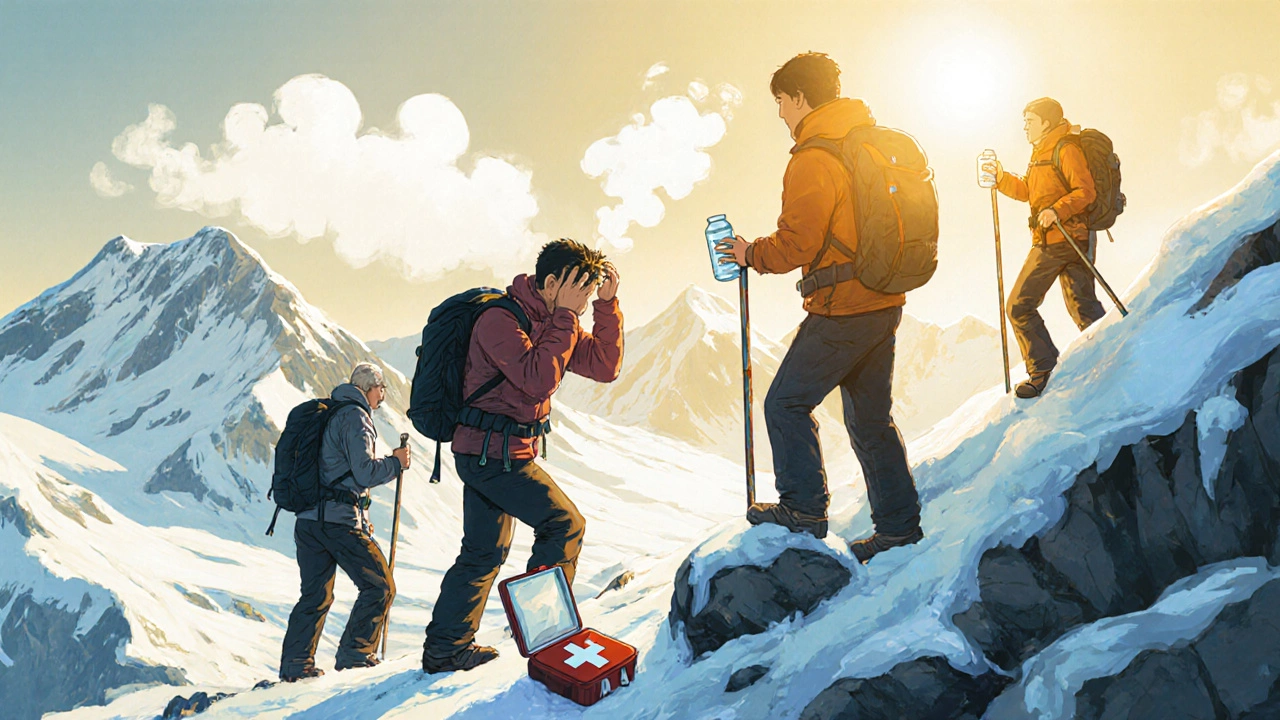
Camping near rivers or under unstable cliffs
It’s tempting to set up camp right by a stream-cool water, flat ground, nice view. But in the mountains, rivers rise without warning. Flash floods can sweep away tents, gear, and people in minutes. In 2021, a group camping near the Bhagirathi River lost everything after a glacial lake burst upstream. Same goes for sleeping under loose rock faces. A single falling stone can kill. Look for high, flat ground away from waterways and cliffs. Avoid valleys that funnel wind or water. Use a tent with a sturdy rainfly. Pack a tarp to create a dry zone even if the ground floods.
Carrying the wrong gear for winter treks
Some trekkers think a fleece jacket and regular hiking boots are enough for winter in the Himalayas. They’re wrong. Temperatures drop below -15°C at night on trails like the Kedarkantha or Brahmatal. Ice forms on rocks. Trails become black ice. Without crampons, an ice axe, and thermal layers, you’re not just cold-you’re in danger. In December 2024, a group from Delhi froze for eight hours on the Kedarkantha summit ridge because they didn’t bring gloves or face masks. One person lost feeling in two toes. Pack for the worst-case scenario. Insulated boots, thermal base layers, windproof outer shells, and hand warmers aren’t luxuries-they’re essentials.
Assuming all trails are well-marked and maintained
Not every trail in India has signs, flags, or painted stones. On lesser-known routes like the Bhrigu Lake Trek or the Dayara Bugyal, markers fade quickly. Snow covers paths. Trails branch in multiple directions. Without a GPS or map, you can easily go off-route. In 2023, a team of four students got lost for 14 hours on the Kuari Pass because they followed a herd of goats. They had no compass, no offline map, and no idea how to read terrain. Always download offline maps (Gaia GPS or Maps.me). Carry a physical map and compass. Know how to use them. Don’t trust your phone’s battery or signal.
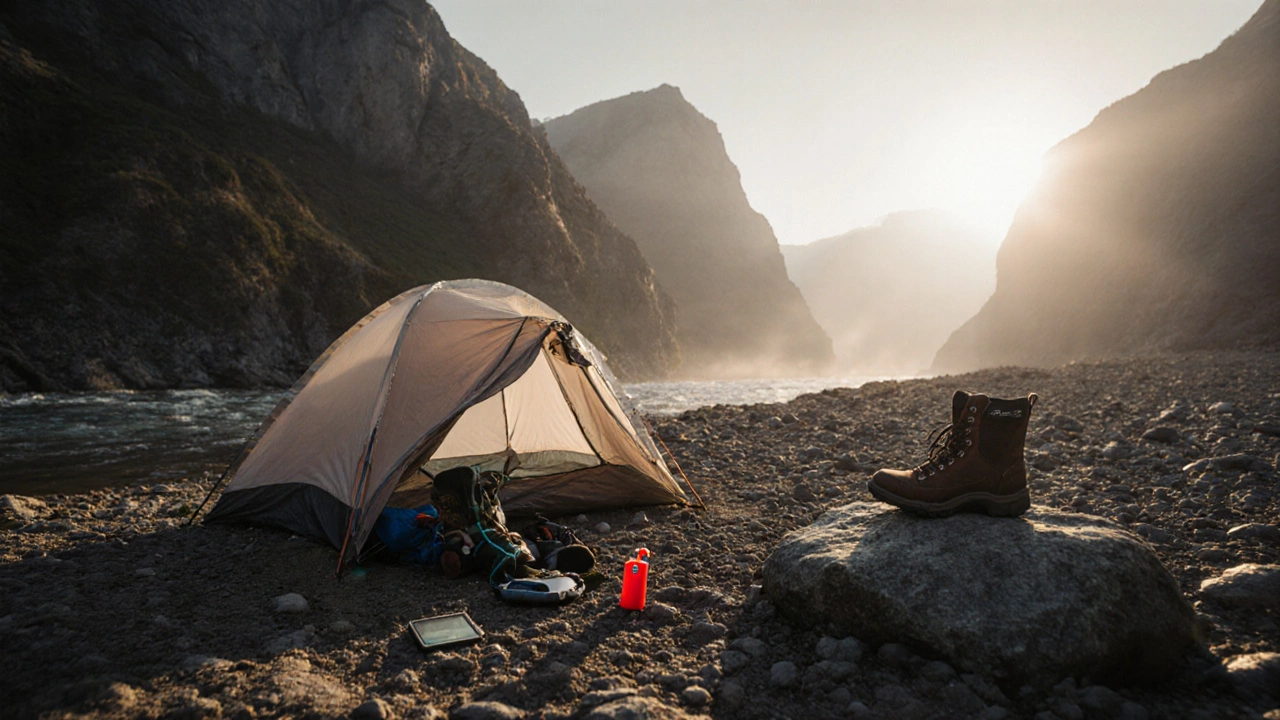
Not carrying enough food and water
You think you’ll find tea stalls or shops along the way. You won’t. Many high-altitude trails have zero settlements for days. The last shop might be 12 kilometers back. Dehydration sets in fast above 10,000 feet. You burn calories faster in cold, thin air. Carry at least 2 liters of water per person per day-and a way to purify more. Bring high-calorie snacks: nuts, dried fruit, energy bars, chocolate. Don’t rely on packaged snacks from the city-they melt, crush, or go stale. If you’re on a multi-day trek, pack at least 3,000 calories worth of food per day. Hunger weakens judgment. Weakness leads to mistakes.
Trying to hike too fast or too far in one day
Many hikers try to cover 15 kilometers in a single day on steep terrain. That’s a recipe for exhaustion, injury, and bad decisions. In the Himalayas, elevation gain matters more than distance. Climbing 1,000 meters in a day is enough for most people. Pushing harder increases your risk of altitude sickness and muscle strain. A 6-hour trek with a 700-meter climb is better than a 10-hour slog with 1,500 meters. Slow is safe. Rest often. Take 10 minutes every hour. Drink water. Eat a snack. Your body isn’t a machine. It’s a living system that needs fuel and recovery.
Not telling anyone your plans
This might sound simple, but it’s the most overlooked mistake. If you vanish on a trail and no one knows where you are, rescue becomes a guessing game. Tell someone your route, your expected return date, and your emergency contact. Leave a note at your guesthouse. Register with the Forest Department if your trek requires a permit. In the Indian Himalayas, local police and rescue teams rely on this info. Without it, they might not even start searching until days later. A quick text before you leave could save your life.
Is it safe to trek in India during winter?
Yes, but only on well-known, properly equipped routes like Kedarkantha, Dayara Bugyal, or Brahmatal-and only if you have the right gear. Winter treks require insulated clothing, crampons, and experience with snow. Avoid high-altitude passes above 14,000 feet unless you’re trained. Always check local conditions and hire a guide if you’re unsure.
Can I trek alone in India as a woman?
It’s possible, but not recommended on remote trails. Many women trek safely in groups or with reputable guides. Stick to popular routes like Nag Tibba or Deoria Tal, where other trekkers and local guides are common. Avoid solo treks on less-traveled paths like Rupin Pass or Pin Parvati. Always inform someone of your plans. Consider joining a guided women-only trek for added safety and support.
Do I need a permit to trek in India?
It depends on the trail. Popular routes like Kedarkantha and Dayara Bugyal don’t require permits. But treks entering protected areas like the Valley of Flowers, Nanda Devi, or parts of Ladakh do. Check with the Forest Department or local tourism office before you go. Fines for illegal trekking can be steep, and you could be turned back at checkpoints. Always carry ID and permit copies.
What should I do if I get lost on a trail?
Stop. Don’t keep walking. Use your map and compass to reorient. If you’re unsure, stay put. Make yourself visible-use a bright jacket or whistle. Call for help if you have signal. If you have a satellite messenger, activate it. Most rescues happen within 24 hours if you’re stationary. Moving randomly makes it harder for search teams to find you. Carry a whistle and a mirror-they’re lightweight and lifesavers.
Are there any treks in India that are safe for beginners?
Yes. Nag Tibba (2,900m), Deoria Tal (2,438m), and Kuari Pass (3,900m) are great for first-timers. They’re well-marked, have guesthouses or campsites along the way, and don’t require technical gear. Stick to these if you’re new. Avoid anything above 4,000 meters until you’ve done at least two shorter treks. Build experience before tackling harder routes.
Final thought: Respect the mountains
India’s mountains aren’t just scenery. They’re powerful, unpredictable, and indifferent to your plans. The best hikers aren’t the fastest or the strongest. They’re the ones who listen- to the wind, to the guides, to their own bodies. They turn back when things feel off. They carry extra food. They check the weather. They tell someone where they’re going. If you do those things, you’ll come home with stories-not scars. And that’s what trekking is really about.
